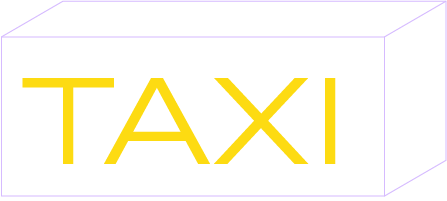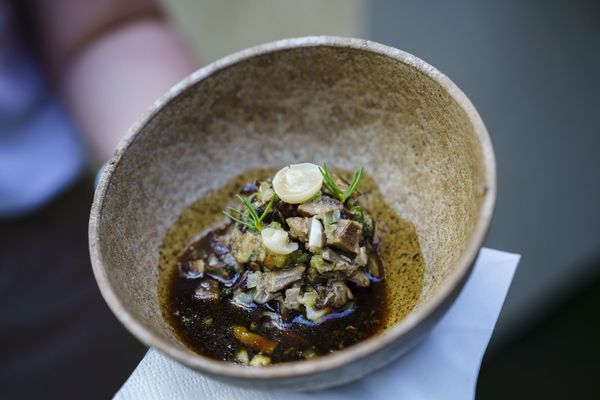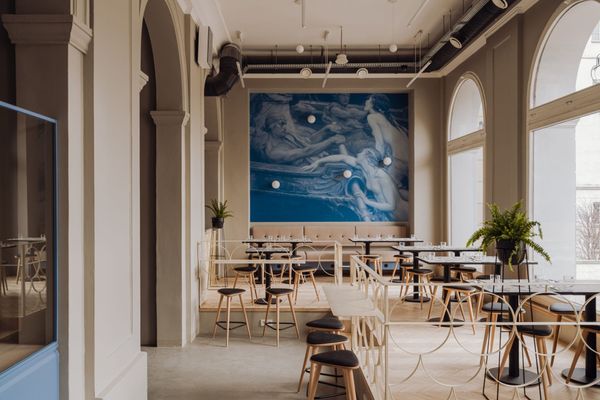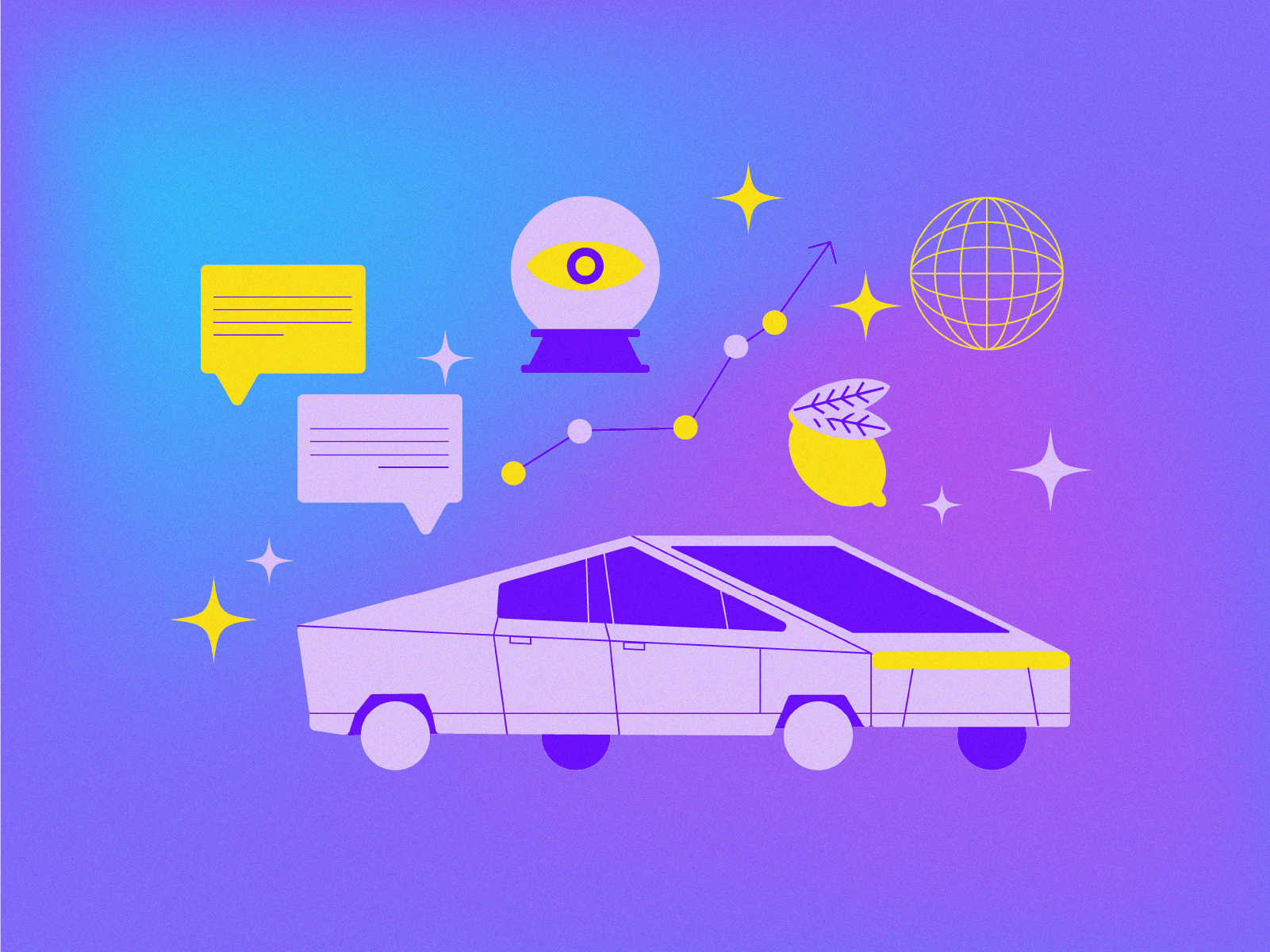He had weekly meetings with the wealthiest person in the world as Elon Musk is not a micro- but a nanomanager. Tesla’s Autopilot is close to Musk’s heart, and he is an enthusiastic tester of new cars. We asked Gábor Szabó, Ph.D., about working for Tesla and the present of the self-driving car industry. Interview – Part II.
The interview’s first part is available here.
After Lyft, one of Uber’s biggest rivals, you stuck with car companies and joined Tesla. Can you tell me some stories about Elon Musk? What was it like to work with him? And how was Tesla’s company culture?
I experienced strange, unusual dynamics at Tesla. The name of our group was Autopilot; I was the leader of one of the subgroups. Elon Musk came at least once every two weeks to see how we were progressing because this was one of his pet projects. During his many visits, he often tested the car. And when he could not be there in person, he still frequently sent us some tips on how to improve the self-driving system.
Tesla was already a giant company, and car sales took off.
You are correct. The Autopilot team worked as a small autonomous startup within the company, just like most other groups at Tesla. There was little bureaucracy; the huge corporation could ensure the resources and test cars for our progress. Each engineer had a high degree of autonomy in the whole development team. This unique environment was really advantageous because it is hard to get results in a big company if you have to fight your way through the hierarchy to get something done. Fortunately, Tesla was different. In other companies, to some extent, everyone puts their shoulder to their own wheel, but the situation was better here.

If Musk was so in control, was there no problem with communication?
At Tesla, everyone’s voice was heard, we could even talk with Elon Musk. What is more, Musk liked to speak face-to-face with the people working on the projects close to his heart. He sometimes spontaneously invited us for a meeting. If something was not going well, he wanted to talk directly with the engineers to see the big picture without a potential managerial distortion. I felt that here we really had a huge individual influence on the future of the products. On the other hand, the expectation was that everything had to work already on the first try. Our work had a relatively fast pace, with tight deadlines. There were no biannual or quarterly plans to achieve certain things. We knew the goals and the functions we should develop, and we had to create them as soon as possible.
Did this big rush harm the company culture?
Everyone was extremely helpful to each other, even if working for another group, as we knew that the expectations were pretty high. Musk directly approached you if something did not work, and you could be sure of some consequences. So, we developed a shared fighting spirit as a group because we all knew that we must support each other. If it was your turn and you had to do something quickly or solve an emerging issue, you needed someone to help you avoid the negative consequences. If you worked there, you obviously had strong motivation, and this, combined with the very high expectations, resulted that we were progressing quickly towards our goals. This is reflected in the fact that Tesla is still years ahead of other car manufacturers in electric car technology.
This is an interesting philosophy for a giant corporation.
It is. Musk calls himself a „nanomanager,” so not even a micromanager. It is an accurate description since he indeed sees everything and has a say in everything. He has an excellent technical mindset and can see the big picture better because he views many more aspects than us. He is not infallible, but he always acknowledges if he is wrong and can always be convinced by data. If he had an idea, but the data or the tests did not show the expected results, he did not stick to his plans at all. Obviously, he has a huge ego, the way how he approaches the world clearly shows it, but when it comes to technical solutions, he acts differently. His philosophy is that whatever happens in the world, do your plans quickly and release them to the people as soon as it is safe. We have all learned this over the years working for him.

Are you still following the news of the autonomous car market?
I follow the news, and I hear many things from former colleagues. I think the situation is getting more consolidated now. There was a period when many new startups specialized in different areas, such as self-driving trucks following each other on the motorway. The significant difference is between the approaches. Waymo, Google’s self-driving car project, has a completely different approach than Tesla. Waymo’s philosophy from the beginning has been that there will be no humans behind the wheel. This means they will not release their product until they can safely drive the car without a steering wheel. But soon, their product will be available; the different companies are going head-to-head. By consolidation, I mean that smaller companies recently started to merge into larger ones. There is less low-hanging fruit now; the era of easily available developments is over. It is no longer enough just to keep the vehicle within the lane. There are more complex issues now, and the developers must address the rarer situations. This is difficult for smaller firms with limited resources, so they either go out of business, or a larger corporation acquires them. Fewer players remain on the field, and the stakes are rising. Both Uber and Lyft had some initiatives, but they have already given up. They realized that they cannot individually solve the problem because everyone is trying to solve the same problem on their own.

To what extent can self-driving cars revolutionize the taxi industry in which Uber and Lyft operate?
First, it seemed that the first company which finds a feasible solution for self-driving cars gets the opportunity to dominate the market. Regarding the taxi industry, the self-driving feature can cut costs: there is no need to pay for a human driver, and the car can park outside the city and go to the center only if ordered. Only fuel and maintenance costs will remain. Fares could be cut by two-thirds in this case, which understandably sounds very attractive. But, after a few years, it turned out that the problems with self-driving cars were not as simple as they seemed at first glance. We are getting closer to relatively workable solutions, but this requires even more investment; therefore, fewer companies will participate in the developments. There will only be a few players left at the end. Waymo can already drive pretty well in San Francisco. It is not one hundred percent safe yet, so it is not as good as a professional human driver, but in the test phase, it is good enough for people. Tesla’s approach is to release everything immediately, on the condition that the people keep their hands on the wheel. In addition, there are developments with self-driving trucks. In this case, the vehicle may not need to be that smart, so the driverless trucks can already be used. On the motorway, the truck drives itself, but when it arrives in the city or at a logistics center, the control is taken by a human. Some companies have specialized in these developments.
Gábor Szabó, Ph.D., is a machine learning researcher; his main interests are predictive modeling and the practical implementation of models. He was a senior staff software engineer and leader of the Autopilot Maps team at Tesla. Before that, he worked on the optimization and resource allocation problem of Lyft’s car-sharing network. He holds a Ph.D. from the Budapest University of Technology and Economics. He is the author of the book “Social Media Data Mining and Analytics” and published several scientific articles.
Graphics by Roland Molnár | Hype&Hyper

The present and the future of a heritage—the COFFEE GROUND experiment of Onyx Műhely

The social deep layers of fashion—Fashion Forward think tank










